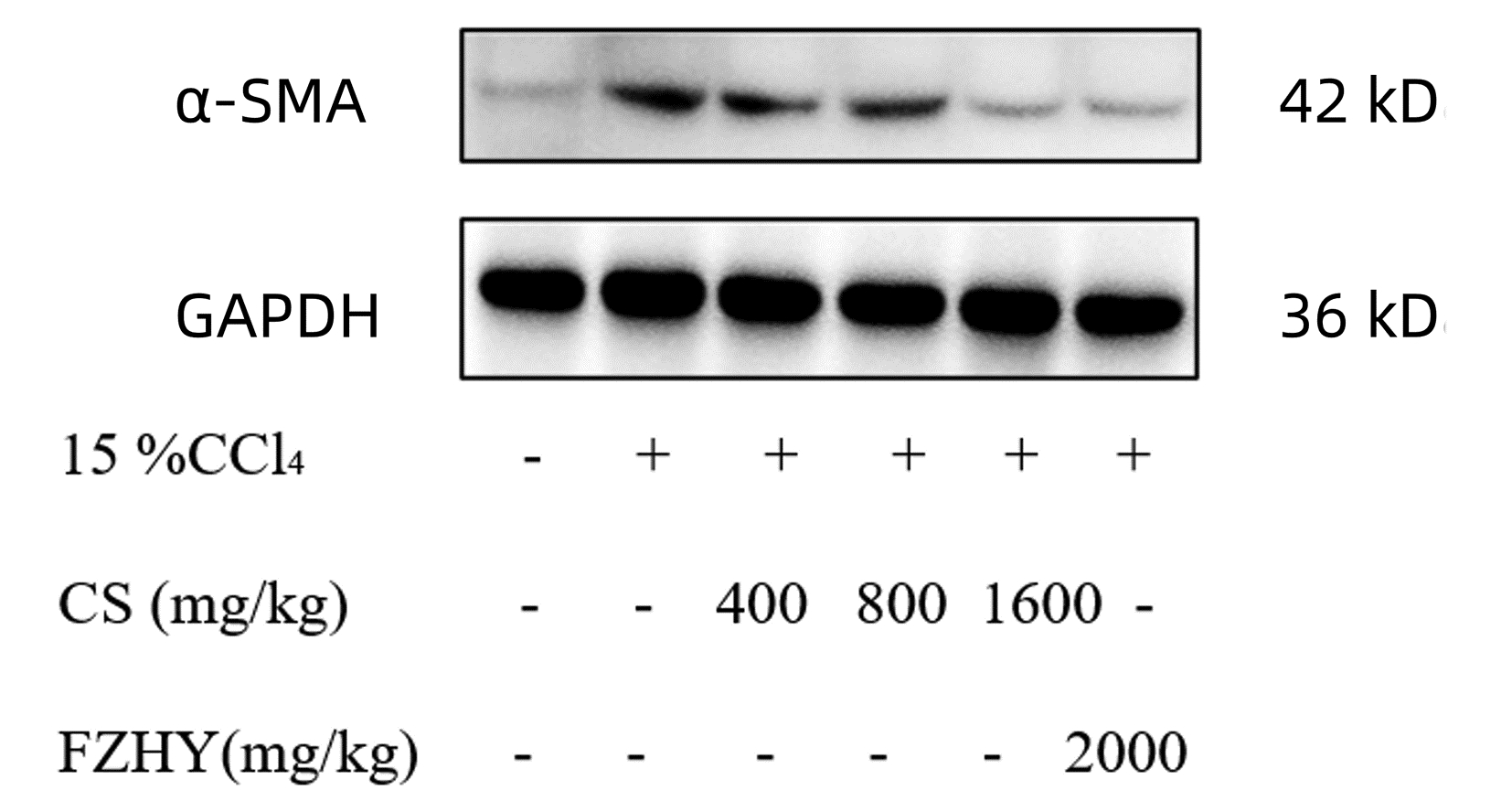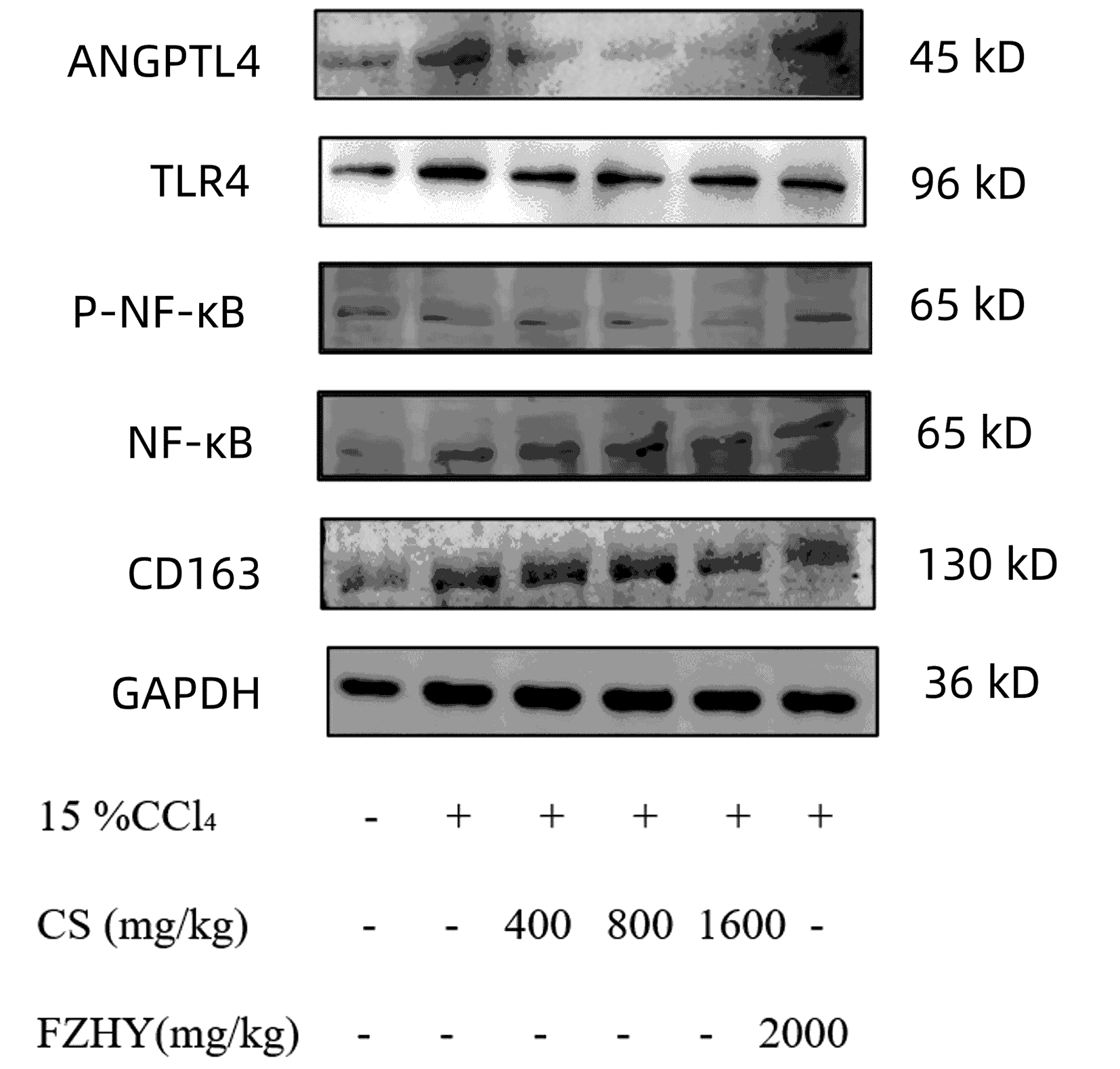| [1] |
|
| [2] |
|
| [3] |
|
| [4] |
CHEN GX, WEN B, SUN HT, et al. Effect of Biejiajian Wan on NF-κB Signaling pathway in rat hepatic fibrosis model induced by CCl4[J]. Chin J Exp Med Formul, 2018, 24(10): 161-167. DOI: 10.13422/j.cnki.syfjx.20180834. |
| [5] |
YANG HR, XU Y, YANG YS, et al. Anti-hepatic fibrosis effect and mechanism of natural products[J]. Chin J Exp Med Formul, 2018, 24(14): 214-221. DOI: 10.13422/j.cnki.syfjx.20181428. |
| [6] |
ZHANG DQ, XU Y, YANG HL, et al. Effect of Xiayuxue Tang with different processing method on CCl 4-induced hepatic fibrosis in rats[J]. Chin J Exp Med Formul, 2020, 26(5): 18-25. DOI: 10.13422/j.cnki.syfjx.20200540. |
| [7] |
MA YF, YANG JE. Efficacy and mechanism of Rougan Huazhuo Bushen recipe in the treatment of liver fibrosis in elderly patients with chronic hepatitis B[J]. Chin J Gerontol, 2021, 41(18): 3959-3962. DOI: 10.3969/j.issn.1005-9202.2021.18.023. |
| [8] |
WANG XB, LIU P, TANG ZP, et al. Acting mechanism of cordyceps mycelia extract for antagonizing hepatic sinusoidal capillarization in rats with dimethylnitrosamine induced liver cirrhosis[J]. Chin J Integr Trad West Med, 2009, 29(9): 810-815. DOI: 10.3321/j.issn:1003-5370.2009.09.011. |
| [9] |
TANG ZP, LIU P, WANG XB, et al. Effect of Cordyceps mycelia extract on hepatic sinusoidal endothelial cells permeability in dimethylnitrosamine-induced liver fibrosis in rats[J]. Chin J New Drugs Clin Remed, 2006, 25(9): 713-717. DOI: 10.3969/j.issn.1007-7669.2006.09.017. |
| [10] |
SINGH A, KODURU B, CARLISLE C, et al. NADPH oxidase 4 modulates hepatic responses to lipopolysaccharide mediated by Toll-like receptor-4[J]. Sci Rep, 2017, 7(1): 14346. DOI: 10.1038/s41598-017-14574-8. |
| [11] |
WEI M, LI B, WANG YF, et al. Gentian bitterside attenuates acute liver injury in mice by inhibiting TLR4/MyD88/NF-κB signaling pathway[J]. Chin J Exp Med Formul, 2021, 27(22): 76-83. DOI: 10.13422/j.cnki.syfjx.20212103. |
| [12] |
ARYAL B, ROTLLAN N, ARALDI E, et al. ANGPTL4 deficiency in haematopoietic cells promotes monocyte expansion and atherosclerosis progression[J]. Nat Commun, 2016, 7: 12313. DOI: 10.1038/ncomms12313. |
| [13] |
ATTA HM. Reversibility and heritability of liver fibrosis: Implications for research and therapy[J]. World J Gastroenterol, 2015, 21(17): 5138-5148. DOI: 10.3748/wjg.v21.i17.5138. |
| [14] |
GROOTAERT C, van de WIELE T, VERSTRAETE W, et al. Angiopoietin-like protein 4: health effects, modulating agents and structure-function relationships[J]. Expert Rev Proteomics, 2012, 9(2): 181-199. DOI: 10.1586/epr.12.12. |
| [15] |
SIMILLION C, SEMMO N, IDLE JR, et al. Robust regression analysis of GCMS data reveals differential rewiring of metabolic networks in hepatitis B and C patients[J]. Metabolites, 2017, 7(4): 51. DOI: 10.3390/metabo7040051. |
| [16] |
TERATANI T, TOMITA K, WADA A, et al. Angiopoietin-like protein 4 deficiency augments liver fibrosis in liver diseases such as nonalcoholic steatohepatitis in mice through enhanced free cholesterol accumulation in hepatic stellate cells[J]. Hepatol Res, 2021, 51(5): 580-592. DOI: 10.1111/hepr.13603. |
| [17] |
PRYSTUPA A, KICIŃSKI P, LUCHOWSKA-KOCOT D, et al. Analysis of novel serum markers of fibrosis and angiogenesis in patients with alcoholic liver cirrhosis[J]. Ann Agric Environ Med, 2020, 27(4): 568-573. DOI: 10.26444/aaem/127621. |
| [18] |
ZHANG X, YUAN S, ZHANG X, et al. ANGPTL4 regulates CD163 expression and Kupffer cell polarization induced cirrhosis via TLR4/NF-κB pathway[J]. Exp Cell Res, 2021, 405(2): 112706. DOI: 10.1016/j.yexcr.2021.112706. |
| [19] |
PORCHERAY F, VIAUD S, RIMANIOL AC, et al. Macrophage activation switching: an asset for the resolution of inflammation[J]. Clin Exp Immunol, 2005, 142(3): 481-489. DOI: 10.1111/j.1365-2249.2005.02934.x. |
| [20] |
KRENKEL O, TACKE F. Liver macrophages in tissue homeostasis and disease[J]. Nat Rev Immunol, 2017, 17(5): 306-321. DOI: 10.1038/nri.2017.11. |
| [21] |
AKAHORI H, KARMALI V, POLAVARAPU R, et al. CD163 interacts with TWEAK to regulate tissue regeneration after ischaemic injury[J]. Nat Commun, 2015, 6: 7792. DOI: 10.1038/ncomms8792. |
| [22] |
LI R, GUO Y, ZHANG Y, et al. Salidroside ameliorates renal interstitial fibrosis by inhibiting the TLR4/NF-κB and MAPK signaling pathways[J]. Int J Mol Sci, 2019, 20(5): 1103. DOI: 10.3390/ijms20051103. |
| [23] |
YU Y, LI MP, XU B, et al. A study of regulatory effects of TLR4 and NF-κB on primary biliary cholangitis[J]. Eur Rev Med Pharmacol Sci, 2019, 23(9): 3951-3959. DOI: 10.26355/eurrev_201905_17824. |
| [24] |
FIOROTTO R, SCIRPO R, TRAUNER M, et al. Loss of CFTR affects biliary epithelium innate immunity and causes TLR4-NF-κB-mediated inflammatory response in mice[J]. Gastroenterology, 2011, 141(4): 1498-1508.e1-5. DOI: 10.1053/j.gastro.2011.06.052. |
| [25] |
LIN L, LI R, CAI M, et al. Andrographolide ameliorates liver fibrosis in mice: Involvement of TLR4/NF-κB and TGF-β1/Smad2 signaling pathways[J]. Oxid Med Cell Longev, 2018, 2018: 7808656. DOI: 10.1155/2018/7808656. |
| [26] |
YOUNIS NS, GHANIM A, ELMORSY MA, et al. Taurine ameliorates thioacetamide induced liver fibrosis in rats via modulation of toll like receptor 4/nuclear factor kappa B signaling pathway[J]. Sci Rep, 2021, 11(1): 12296. DOI: 10.1038/s41598-021-91666-6. |








 DownLoad:
DownLoad:



